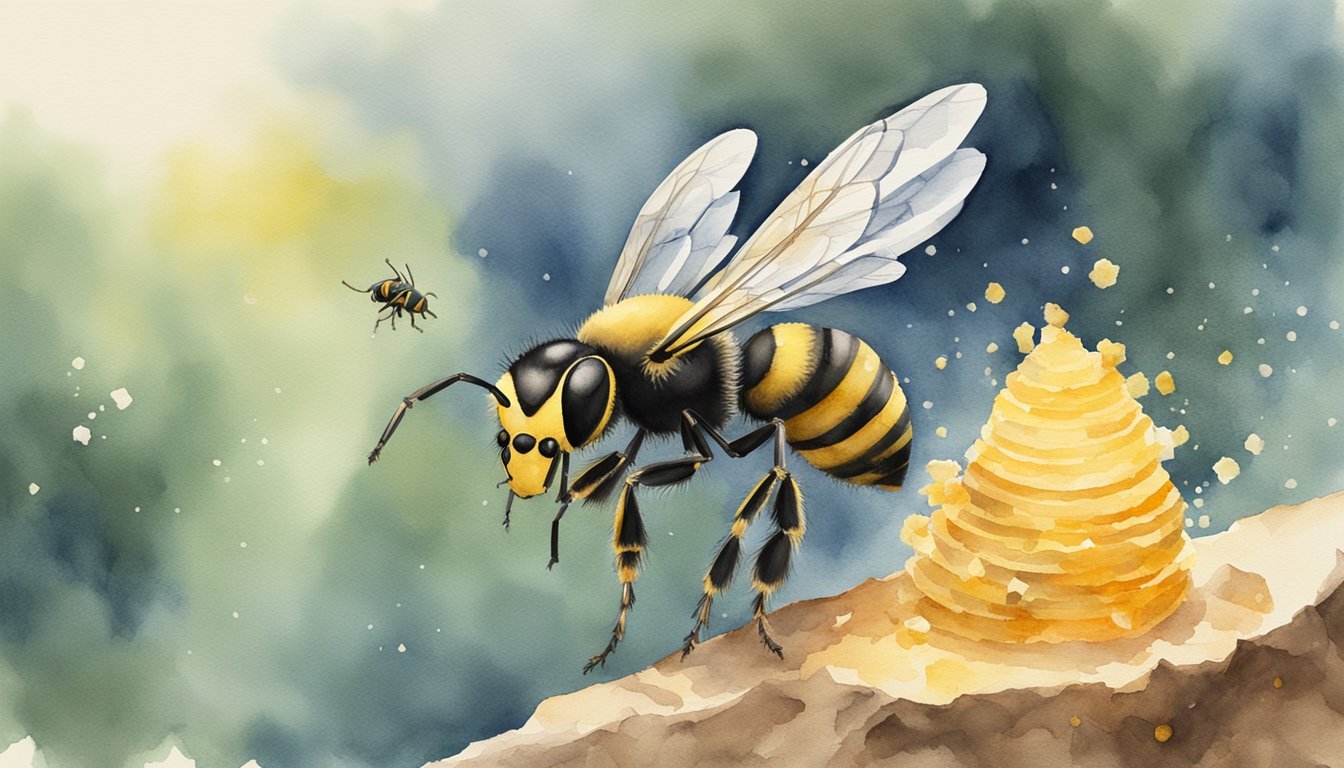Understanding Murder Hornets
Asian giant hornets, colloquially known as murder hornets, have become a topic of concern due to their impact on ecosystems and their painful sting. This section breaks down their identification features, typical habitats, and behavioral patterns.
Species Identification
Asian giant hornets (Vespa mandarinia) are notably larger than other hornet species, reaching up to 2 inches in length. They are recognizable by their distinctive orange heads, teardrop-shaped eyes, black and orange stripes across their bodies, and large mandibles. These features are crucial for telling a ‘murder hornet’ from other nasty wasps.
An important distinction is that, while often confused with other wasps and hornets, the Asian giant hornet is endemic to Asia but has been identified as an invasive species in North America. The presence of this species outside its native region, especially in Washington State and Vancouver Island, has caused concern due to potential impact on local ecosystems.
Habitats and Locations
Originally hailing from regions across Asia, murder hornets are adaptable and typically nest in low mountain foothills and forests. They prefer to create homes in pre-existing cavities like hollowed-out tree trunks but can also burrow to form subterranean nests. These hornets have been spotted in various locations, with sightings reported in Washington and British Columbia, suggesting they have established in North America.
Biology and Behavior
The life cycle of the Asian giant hornet begins with a single queen who starts a new colony every spring. These colonies can grow to include up to several hundred individuals. The hornets feed on other insects and are known for their attacks on honeybee hives, where they decapitate the bees and take the thoraxes to feed their larvae.
They are also known for their aggressive behavior towards other insects and can release pheromones to coordinate group attacks, particularly when attacking hives of bees such as the Japanese honeybee (Apis cerana japonica) and the European honeybee (Apis mellifera). The latter has no effective defense against the hornets, which can decimate entire bee colonies, thus posing a significant threat to local ecosystems.
Human and Environmental Impact

Asian giant hornets, commonly known as “murder hornets,” pose a significant risk to both bee populations and human activities. Their presence in parts of the United States has triggered critical responses from multiple organizations.
Threat to Bee Populations
Asian giant hornets (Vespa mandarinia) are known for their destructive behavior towards honeybee colonies, posing a serious threat to pollination and agriculture. In the Pacific Northwest, entomologists like Chris Looney of the Washington State Department of Agriculture are focused on tracking down hornet nests to protect local bees. A single hornet can decimate a beehive in a matter of hours, using its sizable mandibles to decapitate the bees. This loss of bees could have cascading effects on crop pollination and local ecosystems.
Efforts in Containment and Eradication
The U.S. Department of Agriculture, alongside state departments like Washington’s, has invested in research and resources to locate and eradicate murder hornets. The use of traps and radio trackers in efforts spearheaded by scientists such as Sven Spichiger aims to curtail their spread. Researchers in Washington state and British Columbia are setting up an extensive network of traps, often relying on beekeepers and citizen scientists for reporting sightings and assisting in tracking efforts.
Public Perception and Media
The arrival of murder hornets, with their menacing size of up to 2 inches in length and powerful stingers, has captured public attention. Media coverage, at times sensationalist, has amplified concerns about the hornets’ potential to harm humans. Although their stings are painful and they carry toxic venom, the hornets are generally less of a direct threat to humans. However, for individuals who are allergic, a sting by V. velutina can be dangerous. Proper knowledge and education, as shared by experts, are important to balance the conversation and lessen public fear.

